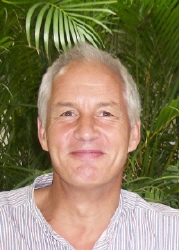| | Outcomes in Integrative Care That Will Intrigue Patients and Clinicians | |
Summary: Bravo to Marja Verhoef, PhD and her team with the Canadian Interdisciplinary Network for Complementary and Alternative Medicine Research (IN-CAM)! On March 31, 2008, IN-CAM unveiled the IN-CAM Outcomes Database. The project, funded through the Lotte & John Hecht Memorial Foundation, brings together a huge set of instruments with which practitioners and researchers can explore their outcomes. While one might quibble with the non-inclusion of presenteeism and economic indicators, this database should become the center of the universe for the most productive research in complementary and integrative medicine. Ever wonder why it is leaders from Canada and not the United States who have taken the lead in this work?
View database:
http://www.outcomesdatabase.org
 Taking the lead in gathering useful outcomes instruments
In a separate announcement of the opening of database at the 3rd International Congress on Complementary
Medicine Research in Sydney,
Australia, Verhoef and her team outlined the two key purposes:
- Make practical information available
on a wide range of outcome measures relevant to CAM
research.
- To organize and categorize
outcome measures within a unique Framework of Outcome Domains that
integrates measurable domains of health into a unified scheme.
Funding came through IN-CAM and the Lotte & John Hecht Memorial Foundation. The Canadian-British team which led the work included Verhoef, Mark Ware, MD, MSc, Trish Dryden, RMT, MEd, Charlotte Paterson, MSc, PhD, MBChB, MRCGP, Laura Weeks, BSc, Ania Kania, RMT, BSc, Linda
Ferguson, Devon Mallory, and Patrick
Gignac,
PhD. They were advised by a team which included two scientists from the University of Arizona School of Medicine, Iris Bell, MD, PhD, and Cheryl Ritenbaugh, PhD, MPH. The announcement from McGill of this historic moment in the short history of CAM research is printed in full, beneath the comments, below.
 Marja Verhoef, PhD, team leader in the project
My only gripe - which I expressed to Verhoef and reported in a prior Integrator article while the project was in development - was the decision not to include economic instruments. If one is interested in measuring impacts of a whole system, as Verhoef and her team are, aren't economics always part of such a system? The site does include functionality measures, which begin to get at the kind of data that employers and other healthcare purchasers need to see. Yet in my quick skim through the alphabetized set of instruments, I saw nothing on presenteeism, for instance. Neither the Work Limitations Questionnaire (WLQ) developed by Debra Lerner, PhD or the Stanford Presenteeism Scale, developed by Integrator adviser Kenneth R. Pelletier, PhD, MD (hc) were represented. Such measures may be the optimal, practical (by that I mean, system changing) outcomes for making the case to employers for the value of whole practices. The good news is that the IN-CAM Outcomes Database includes a place to "Suggest an Outcomes Measure."
Why Was this Initiative Not Born in the United States?
Finally, a reflection and assertion. Is it not interesting that, here, south of the Canadian border, despite $1-billion having been spent by NCCAM on "CAM" research, that such a critically important initiative was engaged outside of our borders? How can we explain this?
I have a couple of thoughts. I invite yours. One is that Verhoef and her team define themselves by asserting their "inter-disciplinary" nature. Their home is within, and across disciplines, rather than inside an MD-dominated universe. Those disciplines which are not exponents of a biomedicine uber alles way of thinking are more likely to prioritize patient-centered outcomes over reductive measure of efficacy. Second, both Canada and England - from which the leadership of this initiative has arisen - have government-funded, universal healthcare. I postulate that when government is more involved in healthcare delivery and payment, it is more likely to focus on practical outcomes.
My thesis here is affirmed by an anecdote from the recently concluded conference of large employers in which Philip Hagen, MD, a worksite health promotion leader, spoke on employee-related initiatives at Mayo Clinic. A member of the audience asked Hagen why hospitals and health systems have tended to be slow, as employers, to develop significant wellness programs for their employees. After a moment, Hagen responded directly: "I think it's because of our tendency in hospitals to believe in biomedicine for everything."
With this database, IN-CAM asserts the importance of the rest of the biopsychosocial model - a fine fit for the wholism of integrative and complementary and alternative health care.
________________________________
IN-CAM Outcomes
Database: Collaborative Research Database To Benefit Complementary And
Alternative Medicine
| Resumes are useful in employment decisions. I provide this background so that you may understand what informs the work which you may employ in your own. I have been involved as an organizer-writer in the emerging fields......more |  |
|
|
Popular Related Articles/Areas
Popular & Related Products
Popular & Featured Events
Dimensions of Wellness
|
|